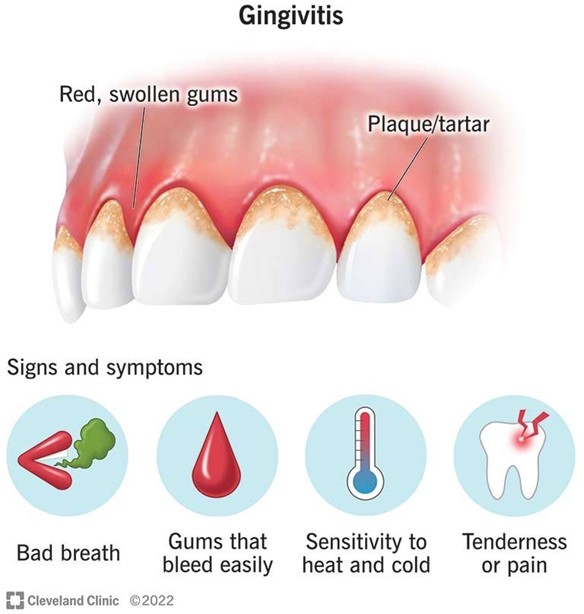A dentist informs the practical nurse (PN) that she has a family history of cancer and has increased the amount of dairy products in her diet to reduce the risk of gingivitis. How should the PN respond?
Suggest an increase in fruits and vegetables is more beneficial
Encourage the client to get plenty of exercise as well as the dietary change
Remind the client to make sure the dairy products are fortified with Vitamin D
Provide writen information about the warning signs of cancer
The Correct Answer is A
a) Suggest an increase in fruits and vegetables is more beneficial.
In this scenario, the dentist is increasing the amount of dairy products in her diet with the aim of reducing the risk of gingivitis due to her family history of cancer. However, the practical nurse (PN) should respond by suggesting that an increase in fruits and vegetables would be more beneficial.
Fruits and vegetables are rich in essential vitamins, minerals, and antioxidants, which can help support overall oral health and reduce the risk of gingivitis. They provide a wide range of nutrients that are important for maintaining healthy gums and teeth.
While dairy products can contribute to overall dental health due to their calcium content, they should not be solely relied upon as the primary means of preventing gingivitis or reducing the risk of cancer. A well- rounded and balanced diet, including plenty of fruits and vegetables, is essential for optimal oral health.
Options b, c, and d are not directly related to the dentist's concern about gingivitis and the increased consumption of dairy products. Encouraging exercise (option b) is generally beneficial for overall health, but it does not specifically address gingivitis. Reminding the client to ensure dairy products are fortified with vitamin D (option c) is not necessary in this context, as the focus is on preventing gingivitis rather than addressing vitamin D deficiency. Providing writen information about the warning signs of cancer (option d) is not directly relevant to the dentist's current situation and concern about gingivitis.

Nursing Test Bank
Naxlex Comprehensive Predictor Exams
Related Questions
Correct Answer is A
Explanation
A. This finding requires immediate action, as it indicates that the client is not receiving the prescribed amount of oxygen, which can compromise the oxygenation and perfusion of the tissues. The PN should adjust the flowmeter to deliver 3 liters per minute of oxygen, and check for any leaks or kinks in the tubing.
The other options are not correct because:
B. The absence of a humidifier does not require immediate action, as it is not a critical component of the oxygen delivery system. A humidifier can help moisten the dry oxygen and prevent mucosal irritation, but it is not essential for oxygenation.
CThe supine position does not require immediate action, as it is not a contraindication for oxygen therapy. The client may prefer this position for comfort or rest, and it does not affect the oxygen delivery or uptake.
D . The snug fit of the cannula does not require immediate action, as it is not a problem for oxygen therapy. The cannula should fit snugly against the client's cheeks to prevent dislodgment or slippage, and it does not interfere with the oxygen flow or diffusion.
Correct Answer is B
Explanation
Choice A rationale:
Asking questions in a vague, non-specific format is not the best approach for addressing intimate partner violence. This approach may confuse the client or make them feel uncomfortable, as they may not know what specific information the nurse is seeking. It is essential to use clear and direct communication when addressing sensitive issues like intimate partner violence.
Choice B rationale:
Beginning with questions that are less sensitive in nature is the preferred approach when interviewing a client about intimate partner violence. This allows the nurse to establish rapport and build trust with the client before delving into more sensitive topics. Starting with less sensitive questions can help the client feel more comfortable and willing to share information about their situation.
Choice C rationale:
Getting the most difficult questions over with first is not the best approach when addressing intimate partner violence. Starting with the most challenging questions may cause the client to become defensive or unwilling to cooperate. It is essential to build a therapeutic relationship before discussing sensitive topics to ensure the client's emotional safety and willingness to disclose information.
Choice D rationale:
Sharing personal values to put the client at ease is not an appropriate approach when addressing intimate partner violence. It can be perceived as unprofessional and may compromise the objectivity and neutrality of the nurse in providing care. The focus should be on the client's needs and concerns, not the nurse's personal beliefs.
Whether you are a student looking to ace your exams or a practicing nurse seeking to enhance your expertise , our nursing education contents will empower you with the confidence and competence to make a difference in the lives of patients and become a respected leader in the healthcare field.
Visit Naxlex, invest in your future and unlock endless possibilities with our unparalleled nursing education contents today
Report Wrong Answer on the Current Question
Do you disagree with the answer? If yes, what is your expected answer? Explain.
Kindly be descriptive with the issue you are facing.
